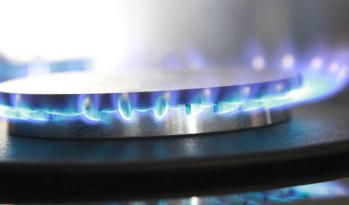LPG properties

Let us introduce you to the various properties of this very efficient gas.
A good mixture: LPG is mainly Propane (C3H8), Butane (C4H10) or a mix of Propane and Butane. Since LPG has such a simple chemical structure, it is among the cleanest of any alternative fuels.
Boiling point: LPG’s boiling point ranges from -42°C to 0°C depending on its mixture percentage of Propane and Butane.
Combustion: The combustion of LPG produces carbon dioxide (CO2) and water vapour, but sufficient air must be available. Inadequate appliance flueing or ventilation can result in the production of carbon monoxide, which can be toxic.
Vapour pressure: LPG is stored as a liquid under pressure. It is almost colourless and its weight is approximately half that of an equivalent volume of water. The pressure inside a closed container in which LPG is stored is equal to the vapour pressure of the liquid and gaseous LPG in the container and corresponds to its temperature.
LPG vapour is denser than air: Butane is about twice as heavy as air and Propane about one-and-a-half times as heavy as air. Consequently, the vapour may flow along the ground and into drains, sinking to the lowest level of the surroundings and be ignited at a considerable distance from the source of leakage.
Ignition temperature: The temperature required to ignite LPG in the air is around 500°C.
Calorific value: The calorific value of LPG is about 2.5 times higher than that of main gas, so more heat is produced from the same volume of gas.
Toxicity: LPG is a colourless, odourless and non-toxic gas. It is supplied commercially with an added odorant to assist detection by smell. LPG is an excellent solvent of petroleum and rubber product and is generally non-corrosive to steel and copper alloys.
Safety: LPG is just as safe as any other fuel. In fact, it is safer than most fuels because neither LPG itself nor the end products that are produced by burning LPG in a suitable appliance are poisonous to inhale. Since LPG cannot burn without air, there can never be a ‘flashback’ into the cylinder.
You can feel safe with LPG as the most thorough precautions are taken to ensure your safety. All you have to do is to handle it correctly while adhering to the simple instructions provided.

